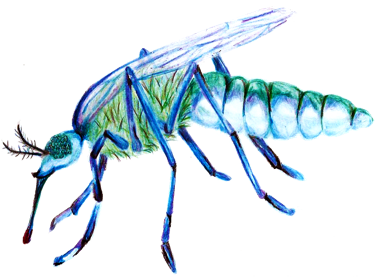It is an increasingly common and controversial strategy to reduce populations of mosquitoes that can transmit dangerous diseases. But a new Yale study finds that it might not work and might actually make things worse.
Oxitec, a commercial biotechnology company, genetically engineered male Aedes aegypti mosquitoes with two strains from Cuba and Mexico to create transgenic mosquitoes with a dominant lethal gene. This gene, when tested in a laboratory setting, resulted in the mating process to produce no offspring 97 percent of the time. The three percent of offspring that survived, they said, were so feeble that they were unable to survive into adulthood and reproduce.
Brazil, a country affected by the Aedes aegypti mosquito and its ability to carry diseases like Dengue and Zika, was quick to purchase this strain of transgenic mosquitoes to curtail their use of insecticides. However, when these mosquitoes were released into the city of Jacobina, Brazil, these predicted results did not come true.
Benjamin Evans, a graduate student in the Department of Ecology and evolutionary Biology and his team joined the study after the release of an estimated 48.6 million transgenic mosquitoes into Jacobina. They were tasked with detailing the effects of the study on the mosquito population, including “tracking population size changes and whether the markers of the dominant lethal gene were present in any of the local mosquitoes.” What they found was that after an original drop in the population size up to eighteen months after release, the release of the mosquitoes never “eradicated” the wild populations, actually resulting in a population rise to pre-transgenic mosquito introduction numbers.
They also discovered that the supposedly “lethal gene” was somehow in the population using specific sequence markers within the gene. The problem with this is that Oxitec scientists had said that any mosquitoes with the lethal gene would be unable to reproduce and therefore their genetically modified DNA would not exist in the population. A potential risk of this may be that the combination of different strains of mosquitoes from different regions may actually result in a more robust class of mosquitoes because of a principal in biology called “hybrid vigor,” where a diverse DNA genome makes a stronger population.
When asked what could be a possible reason that the lab results differed so much from the actual results, Evans responded that the vast number of mosquitoes released could have made it simple statistics. A very small percentage of the three percent of offspring that survived from the initial mating may have not been too weak to reproduce, so their genes could have been passed down. After this, the lethal gene would not have as much of an effect on the second generation offspring because some of the mosquitoes may not have received the lethal gene. Also, according to Jeffrey Powell, the senior author of the paper, the rebound in population may be attributed to the fact that after a while, females in Jacobina may have stopped mating with the non-local mosquitoes. Evans said he wishes his team, “could have been involved earlier, so that we could have sampled in a more rigorous way” and had definitive samples from before the release of the mosquitoes.
Looking forward, scientists may be hesitant to genetically modify mosquitoes and release them into wild populations. “There are now many different methods to drive genes into populations that would be more persistent,” Evans said. Modern technology may work better if this study was to be repeated. When asked if this approach to controlling insect populations was still viable, Evans said that though this particular method may not have been effective in curbing the mosquito population, “It’s not something to write off in the future.”

